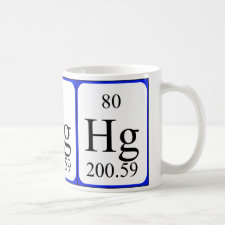
Authors: Soleimani M, Afshar MG
Article Title: Highly selective solid phase extraction of mercury ion based on novel ion imprinted polymer and its application to water and fish samples.
Publication date: 2015
Journal: Journal of Analytical Chemistry
Volume: 70
Issue: (1)
Page numbers: 5-12.
DOI: 10.1134/S1061934815010189
Abstract: A novel ion imprinted polymer (IIP) material has been synthesized for mercury ion. The IIP material is applied to the solid phase extraction (SPE) of Hg2+ from complex matrixes including water and fish samples. The IIP-SPE method is operated prior to cold vapor atomic absorption spectroscopy (CV-AAS) to determine mercury ion. In the polymer synthesis, mercury ion, 2-vinylpyridine, ethyleneglycol dimethacrylate and 2,2'-azobisisobutyronitrile are used as target, Hg2+ complexing reagent monomer, cross-linker and initiator, respectively. The polymer is characterized on the basis of FT-IR and thermal analysis (thermogravimetric, TGA; differential thermic, DTA; and differential scanning calorimetry, DSC). The obtained polymer block is ground, sieved and Hg2+ ions are removed from polymer particles by leaching with EDTA, which leaves a cavity in the polymer particles. The maximum Hg2+ adsorption capacity of IIP is 24.6 mg/g. Effective parameters on retaining Hg2+ such as pH, flow rate of sample and eluent, nature of the eluent, ionic strength, selectivity coefficient and retention capacity are investigated. The detection limit and the relative standard deviation are 5 x 10-4 ng/mL and 2.4%, respectively. After 20 adsorption cycles, the recovery of Hg2+ on IIP is only decreased by 3.2%. The column selective adsorption experiments of Na+, Cu2+, Pb2+, Cd2+, Ca2+ and Mg2+ ions with respect to mercury are conducted by using imprinted and non-imprinted polymer. These results showed that the IIP is highly selective for Hg2+ over the other metals
Template and target information: mercury ion, Hg(II)
Author keywords: ion imprinted polymer, solid phase extraction, Mercury ion, fish sample



Join the Society for Molecular Imprinting

New items RSS feed
Sign-up for e-mail updates:
Choose between receiving an occasional newsletter or more frequent e-mail alerts.
Click here to go to the sign-up page.
Is your name elemental or peptidic? Enter your name and find out by clicking either of the buttons below!
Other products you may like:
 MIPdatabase
MIPdatabase









